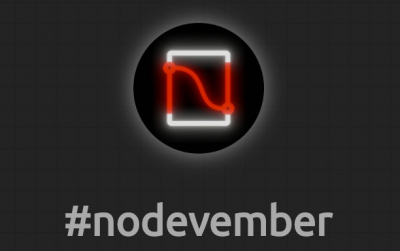Blender add-on “Watermark Plus” v. 1.0.1.
Blender add-on “Watermark Plus” updated to v. 1.0.1.
- Change Watermark Lv2 for proper work with Blender 2.9x
Blender add-on “Watermark Plus” updated to v. 1.0.1.
“Nodevember 2020” – the next challenge is coming from November 1 to 30 for amateurs and fans of procedural (node-) modeling and creation. The rules of the challenge are very simple – each participant creates one procedural material/object on a given topic each day with Blender exclusively using nodes. You can create whatever you want – models, meshes, materials, shaders, and even music, as long as they are procedural. Next, publish your created object on social networks with the #nodevember hashtag.
 Webpage: nodevember.io
Webpage: nodevember.io
BIS (Blender Interplanety Storage) updated to v.1.9.1.
The Blender Foundation is now an official member of the Khronos Group, an industry consortium that develops and implements open standards for programming interfaces (APIs) for graphics and sound, such as OpenGL, Vulkan, and glTF.
The Blender 2.83.8 LTS release is enabled for downloading on the official Blender site.
16 bugs fixed in this version.
Blender 2.91 is beta now, Blender 2.92 alpha released. Both of them are available for download in daily builds on the Blender official site.
BIS (Blender Interplanety Storage) updated to v.1.9.0.
The developer of a free distributed computing render farm that supports Cycles and Luxcore replied, “We need an incentive, not material.”
Farm features:
Your computer, in its free time, does the calculations for the render farm. Renders the project for some web users. Some part of the image, or some frame of animation. This is how your computer earns points.
When you need to render, you upload the project to the farm, press “Render” and the nodes of network users will be rendered for you. Your earned points will allow you to render on the farm as much as you have points.
So what kind of incentive does a developer expect? The answer is obvious – our activity. Our desire for this project to exist. Our desire to use this farm.
Its counterpart is only Sheppit, with all its limitations.
On this farm, there are no restrictions.
How to be active.
Leave a comment here under the news.
Or on the forum, directly to the developer
Or on the Luxcore forum